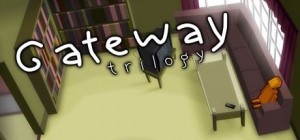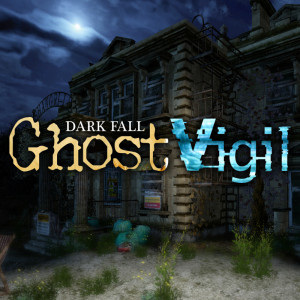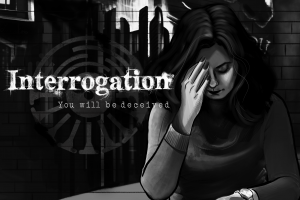Review for The Gateway Trilogy

The first entry in what would become The Gateway Trilogy was created in 2006 as part of an amateur game contest held by the freeware site Jay Is Games. Receiving a warmer reception than he’d expected, developer Anders Gustafsson produced a sequel the following year, and despite even more positive reviews it remained his final word on the subject for nearly two decades. (There was the small matter of completing the episodic claymation adventure The Dream Machine in the meantime.) Finally, in 2020, we have the commercially-released trilogy, featuring updated and remastered editions of the first two games alongside a never-before-seen third installment. Taken together, the trio present an intriguing and brain-teasing puzzle-fest with a unique minimalist aesthetic, though the collection’s short length and nearly impenetrable story might turn some players off.
A few elements remain consistent across all three entries. The isometric visuals are bare and basic, with the backdrops consisting mostly of spartan chambers floating in darkness. Your character is a blocky humanoid figure resembling a board game piece (both visually and in personality), and there’s rarely any set dressing beyond what’s immediately relevant to your purposes. Music is likewise minimal, mostly taking the form of low bass keyboard tones reminiscent of a John Carpenter score. This kind of extreme minimalism may not seem like much at first, but it proves strikingly versatile as the trilogy progresses.
Controls are similarly simple, featuring a mouse cursor used to move your character and interact with the environment when hovering over a hotspot. You’ll occasionally find objects that you can pick up and place in your inventory, located at the top of the screen, but only a minority of the puzzles wind up being inventory-based. A few hotspots only activate after you've selected an inventory item to use, but the rooms are small enough that they're easily discovered. Accessibility options from the main menu are a nice touch, offering players color, hearing and reading aids if necessary.
The first of the games—titled simply Gateway I, II, and III—drops you into a series of corridors without preamble. Your task, it becomes clear, is simply to solve the puzzles preventing you from progressing further. These obstacles are many and varied even in the opening installment, which takes less than an hour to complete, involving organizing a series of images, reconstructing a staircase, and divining how colors and numbers relate. The episode ends as abruptly as it began, and its only apparent connection to what follows is an elevator you’ll step onto just before the credits; the opening of the next game sees you stepping off again.
Gateway II introduces a defined narrative—albeit a limited one—in which you must divine the identity of a mysterious figure wandering the halls while avoiding the disembodied gaze of a being called “Mother.” The aesthetic remains identical to the previous game, but the sequel uses these simple elements to establish a palpable feeling of dread. Almost from the start, the atmosphere here is ominous in a way the first game’s wasn’t, as Mother’s probing eyes appear suddenly from the darkness and the stranger calls out increasingly strident warnings. Puzzles in this second installment are of a similar nature to those in the first, if somewhat more complex. Most require you to identify patterns and use logic to move forward; a few involve avoiding Mother's gaze as you approach a door or object, with the consequence that the puzzle resets if you're seen. Part two is larger and longer than the first, but still shouldn’t take much more than an hour to finish.
Gateway I and II are helped along by an optional developer’s commentary track, which can be toggled on or off via the menu. Selecting it places prompts throughout each room that reveal Gustafsson’s thoughts and insights on the features you’re seeing. These provide a fascinating insight into the process of indie game development, as Gustafsson discusses the original thinking behind certain puzzles and explains some of the changes he was inspired to make upon revisiting them. (The versions included in this anthology have been significantly redesigned from their freeware originals.) Despite never having played a Gateway game before, I found the commentary track fascinating, as they chart Gustafsson’s evolution as a developer from amateur hobbyist to award-winning professional. It’s the rare peek at sausage-making that leaves one hungrier.
Gateway III differs from its predecessors in several ways. The most obvious is in its scale: while you’ll still spend most of your time wandering sparse corridors, this chapter features the trilogy's first exteriors, including cityscapes and visually busy outdoor scenes. (Parts one and two featured peeks at the interior of a suburban home, but they were still relatively simple compared to what we see here). It’s also double the length of the second entry, taking around two hours to complete. Unfortunately, with the increased scope comes a pair of bugs I encountered—one in which a door I needed to open became stuck closed, and another that crashed the game entirely—which forced me to load an earlier save. (Saving is automatic, but there's a manual option as well.)
The finale’s puzzles are the best the trilogy has to offer, requiring a great deal of thought, planning and coordination to solve. Most involve manipulating a series of floor tiles, which can mean distributing weight along several pressure pads, finding a path from point A to point B without re-crossing your own trail, or highlighting certain spaces and blacking out others to reproduce images. At one point you encounter a doppelganger whose movements reflect your character’s like a mirror, and you’ll have to act in such a way that both characters’ motions serve your purposes. There’s a difficulty slider available for the puzzles in part three that allows you to toggle between normal and hard; the latter features more complex challenges that take longer to solve than the former’s, but both modes are uniformly excellent.
Gateway III is easily the strangest of the three games as well, taking the surrealist flavor of the first two and cranking it as high as it will go. The narrative here, for instance, features the protagonist attempting to wake a giant by traveling inside his body to find the control panel that powers his limbs and organs. In Gateway II, the nature of the story became clear in the end and helped justify its earlier weirdness; this one culminates in a bizarre, abrupt non sequitur with very little connection to anything that came before. It seems like an attempt at Lynchian absurdism, but instead it winds up feeling obtuse and anticlimactic. I couldn’t even begin to speculate about what the game wants us to feel with this ending; if it was “bewilderment,” it succeeded wildly. There isn't a commentary track in part three, so you can't even turn to Gustafsson for guidance.
This ending might still have worked if the trilogy had handled its story the same way across all three entries, but its approach is scattershot and inconsistent. Part one lacks even the hint of a plot; puzzles present themselves and you have to solve them in order to progress further before reaching an abrupt ending. Part two tells a relatively straightforward tale with beginning, middle and end; the imagery is somewhat dreamlike and developments occur in nonlinear fashion, but by the end it all ties together in a way that makes sense. Part three takes a completely different tack, leaning hard into its somewhat baffling style and never letting up.
One notable example comes in the way the third game presents its unvoiced dialogue: while both Gateway II and III feature characters speaking, the latter inexplicably presents most of their lines in Braille. This seems like it should be significant—that being able to read or translate it might reveal some extra dimension to the proceedings—but all you’ll get if you do the external research is the revelation that characters are basically describing what's happening on screen. (It's also notable that the synthesized voice-over provided by the reading aid option won't actually speak these lines aloud, meaning they're inaccessible to Braille-dependent players.) There’s no other reference to visual impairment in the game, so the thinking behind presenting the dialogue this way is never clear. It’s one of several strange and seemingly extraneous elements that Gateway III introduces without apparent justification, and if there’s a thematic reason for any of them I never figured out what it was.
Ultimately, The Gateway Trilogy is a bit of a misnomer. Playing through all three together for the first time, it becomes clear that this isn’t so much a trilogy of interrelated games as it is a collection of separate works by the same developer that happen to share an aesthetic and a design philosophy. None of them require knowledge of the others to be effective, and associating three separate works so closely might actually harm one’s perception of them more than it helps. The trilogy succeeds mostly as a loosely-themed collection of puzzle games than it does as a cohesive “series,” with its warts-and-all look at a single developer’s journey through the years an enlightening and engaging bonus. You may come away wondering what, exactly, it was all about, but anyone looking for a few hours of creative puzzling or an accessible peek into the world of game development will find a lot to enjoy along the way.
Our Verdict:
The Gateway Trilogy is sometimes too mysterious for its own good, but it’s nonetheless an entertaining collection of well-designed puzzles presented alongside accessible and entertaining commentary from its developer.
You don't want to miss these articles
Adventure Gamers Community
Community reviews for more Adventure Games (randomly selected)
Review of Captain Disaster in Death Has a Million Stomping Boots
Rating by Syd Sacchi (Feb 21, 2018)
Review of Captain Disaster in Death Has a Million Stomping Boots
Rating by Syd Sacchi (Feb 21, 2018)



























